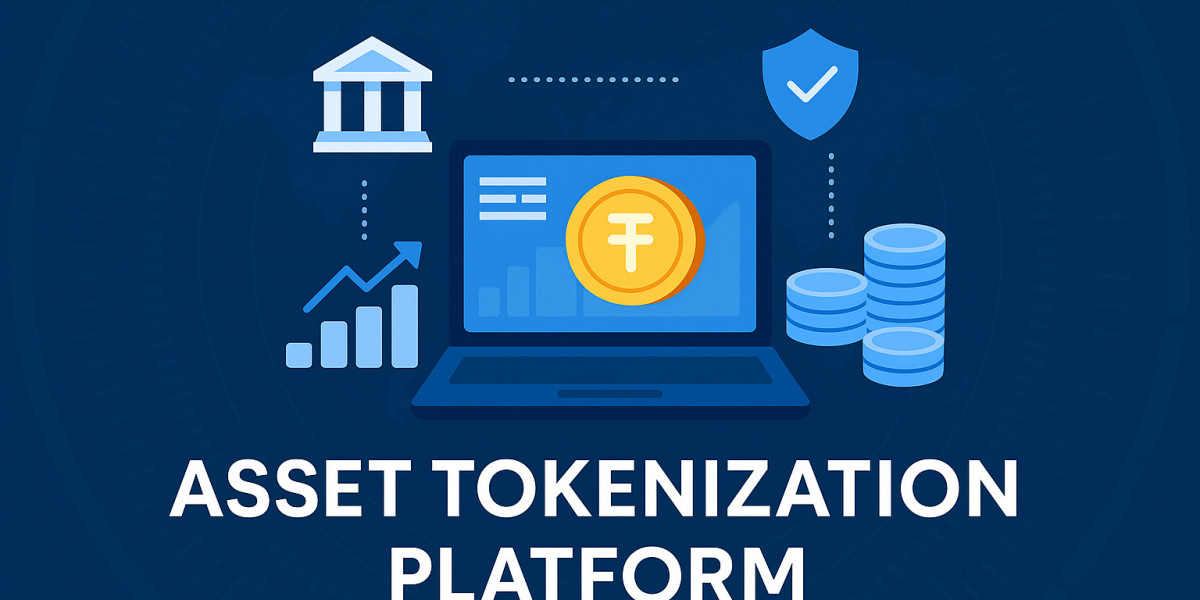The financial world is witnessing a revolutionary shift with tokenization a process where real-world assets (RWAs) like real estate, art, equities, or commodities are represented as digital tokens on the blockchain. This innovation unlocks unprecedented liquidity, accessibility, and transparency. By 2025, tokenized asset marketplaces are poised to become the backbone of decentralized finance (DeFi) and institutional investment strategies. Businesses, investors, and innovators are increasingly recognizing that tokenization is not just a trend but the future of asset management.
However, building a tokenized asset marketplace is not merely about adopting blockchain technology. Security, compliance, and scalability are vital pillars of such platforms. Launching a secure tokenized asset marketplace in 2025 demands a comprehensive understanding of regulatory frameworks, cutting-edge technology stacks, user-centric design, and long-term business models. This blog provides a complete guide on how entrepreneurs and enterprises can build a secure tokenized asset marketplace that thrives in the evolving digital economy.
Understanding Tokenized Assets
Tokenized assets are digital representations of real-world assets stored and transacted on a blockchain. Each token serves as proof of ownership or a share in the underlying asset. For example, a luxury property worth $10 million can be divided into one million tokens, each representing fractional ownership. Investors can purchase tokens to own a share of the property without needing to buy the entire asset.
This approach democratizes access to investments that were once exclusive to high-net-worth individuals and institutions. Tokenized assets also enhance liquidity since tokens can be traded seamlessly across global marketplaces. By integrating smart contracts, the entire process from ownership transfer to dividend distribution can be automated, reducing reliance on intermediaries.
Why Launch a Tokenized Asset Marketplace in 2025?
The year 2025 marks a turning point for tokenization. Global institutions, governments, and regulators are acknowledging the significance of blockchain-powered marketplaces. According to industry projections, the tokenized asset market could surpass $16 trillion by 2030, with substantial growth already accelerating.
A marketplace provides a centralized hub for buying, selling, and trading tokenized assets in a compliant manner. By launching such a marketplace, entrepreneurs can tap into multiple benefits, including:
High liquidity by fractionalizing high-value assets.
Global investor participation without geographical barriers.
Reduced costs through smart contract automation.
Compliance-friendly structures as governments provide clearer guidelines.
New revenue streams from trading fees, custody services, and premium features.
In 2025, the competitive edge lies not just in offering tokenization but in delivering a secure and trustworthy marketplace where investors feel confident.
Key Challenges in Building a Secure Tokenized Asset Marketplace
While the opportunities are vast, launching such a platform involves navigating significant challenges:
Regulatory Complexity: Tokenized assets often fall under securities laws, which vary across jurisdictions. Ensuring compliance is complex but critical.
Security Threats: Blockchain platforms remain vulnerable to cyberattacks, hacks, and smart contract exploits. A single breach can destroy trust.
Liquidity Management: Ensuring that assets are tradable with adequate buyers and sellers is crucial for sustaining investor confidence.
User Adoption: Tokenization is still an emerging concept. Platforms must provide seamless user experiences and education to attract retail investors.
Interoperability Issues: Different blockchains and token standards may limit asset mobility unless cross-chain solutions are integrated.
Addressing these challenges strategically ensures that your marketplace is robust, secure, and future-ready.
Step 1: Define Your Marketplace Vision
The first step is to establish a clear vision of the kind of marketplace you want to launch. Ask yourself:
Will your marketplace focus on real estate, commodities, equities, or art?
Do you want to cater to institutional investors, retail investors, or both?
Will the platform be permissioned (restricted access) or permissionless (open to all)?
A strong vision helps in positioning your marketplace uniquely in a competitive environment. For example, some marketplaces focus exclusively on tokenized real estate, while others embrace multi-asset ecosystems. By 2025, niche specialization often leads to stronger trust and adoption.
Step 2: Navigate the Regulatory Landscape
Regulations remain the cornerstone of any secure marketplace. In 2025, jurisdictions like the United States, Europe, Singapore, and the UAE have clearer tokenization frameworks. The first step is identifying the regulatory requirements applicable to your target market.
Security Laws: Many tokenized assets are classified as securities. This requires compliance with KYC (Know Your Customer), AML (Anti-Money Laundering), and CFT (Counter Financing of Terrorism) laws.
Licensing Requirements: Some jurisdictions mandate special licenses for digital asset marketplaces, similar to stock exchanges.
Taxation Policies: Proper structuring is needed to manage capital gains and tax obligations for both investors and asset issuers.
Collaborating with legal experts ensures your platform avoids penalties and builds investor trust. The more transparent and compliant your marketplace is, the higher its adoption potential.
Step 3: Choose the Right Blockchain Infrastructure
The backbone of your marketplace is the blockchain network it operates on. Factors such as scalability, transaction costs, interoperability, and developer support determine the choice. In 2025, several blockchain ecosystems dominate the tokenization space:
Ethereum: Leading in smart contracts, though gas fees can be high.
Solana: Known for high throughput and low fees, ideal for marketplaces with heavy trading volumes.
Polygon: Offers Ethereum compatibility with lower costs.
Hyperledger Fabric & Corda: Popular for permissioned marketplaces targeting institutions.
Avalanche: Gaining traction for asset tokenization due to its scalability and customization features.
The selected blockchain should align with your marketplace’s goals. For instance, if compliance and enterprise integration are priorities, a permissioned blockchain like Hyperledger may be ideal.
Step 4: Develop Smart Contracts for Automation
Smart contracts form the backbone of tokenized marketplaces by automating processes like asset issuance, trading, dividends, and compliance checks. They reduce reliance on intermediaries while ensuring transparency.
When designing smart contracts, focus on:
Security Audits: All contracts must undergo rigorous audits to prevent vulnerabilities.
Upgradability: Contracts should support updates as regulations or business models evolve.
Compliance Integration: Embed rules to automatically enforce KYC/AML compliance.
In 2025, businesses must prioritize secure smart contract frameworks to prevent reputational risks from hacks and breaches.
Step 5: Token Standards and Asset Representation
Choosing the right token standard ensures smooth functionality across wallets, exchanges, and marketplaces. Common standards include:
ERC-20: For fungible tokens (e.g., shares of a company).
ERC-721: For unique assets like art or collectibles.
ERC-1155: For hybrid fungible and non-fungible assets.
For real estate and RWAs, security token standards such as ERC-1400 are gaining prominence because they integrate compliance features directly into the token structure. By 2025, these standards have matured, making them the foundation for regulated tokenized asset platforms.
Step 6: Build Secure Custody and Wallet Solutions
Investors require a secure way to store and manage their tokenized assets. Your marketplace must integrate wallets that provide both usability and security. Options include:
Hot Wallets: Connected to the internet, ideal for frequent transactions but require strong protection.
Cold Wallets: Offline storage providing maximum security for long-term holdings.
Multi-Signature Wallets: Requiring multiple approvals for transactions, minimizing risks of unauthorized transfers.
Many marketplaces also partner with regulated custodians to manage institutional-grade security and compliance.
Step 7: Design an Intuitive User Experience
While blockchain technology powers the backend, user experience defines adoption. In 2025, marketplaces that succeed are those that make complex processes simple for users.
Key elements include:
Easy onboarding with seamless KYC/AML verification.
Clear dashboards showing asset performance, ownership, and transaction history.
Mobile compatibility for global access.
Educational resources to help first-time users understand tokenization.
User-centric design creates confidence and ensures broader adoption among retail investors.
Step 8: Integrate Secondary Market Trading
One of the most attractive features of tokenized assets is liquidity. To enable this, your marketplace must support secondary market trading, where investors can buy and sell tokens freely.
By 2025, tokenized secondary markets are regulated similarly to traditional exchanges. They provide price discovery, liquidity, and broader investor participation. Your platform must integrate automated market-making (AMM) tools, order books, and compliance filters to ensure secure and legal secondary trades.
Step 9: Security Measures and Cyber Resilience
Security is the most critical factor in building trust. Tokenized marketplaces are lucrative targets for hackers, making multi-layered defenses essential.
Some best practices include:
End-to-End Encryption for transactions and communications.
Multi-Factor Authentication (MFA) for all users.
Regular Smart Contract Audits from third-party firms.
Penetration Testing to identify vulnerabilities.
Insurance Coverage to compensate users in case of breaches.
By prioritizing cyber resilience, marketplaces can ensure sustainability and investor trust.
Step 10: Monetization and Revenue Models
A marketplace is also a business venture, so identifying revenue streams is essential. Common models include:
Transaction Fees: Small percentages on every buy/sell transaction.
Listing Fees: Charging asset issuers for tokenizing and listing their assets.
Premium Services: Offering advanced analytics, custody, or advisory services.
Membership Plans: Providing benefits for institutions or high-volume traders.
The right balance ensures profitability without discouraging participation.
Step 11: Marketing and Community Building
Even the most secure marketplace needs visibility. In 2025, community-driven growth is a core success factor. Marketing strategies should include:
KOL (Key Opinion Leader) Marketing to build trust in niche investor communities.
Content Marketing through blogs, whitepapers, and case studies.
Social Media Campaigns targeting global investors.
Strategic Partnerships with asset issuers, custodians, and DeFi platforms.
A thriving community strengthens credibility and drives organic growth.
Step 12: Future-Proofing with Interoperability and AI
To ensure long-term success, marketplaces must prepare for future technological shifts. By 2025, two major trends are shaping tokenized ecosystems:
Interoperability: Cross-chain solutions enable assets to move across blockchains, ensuring greater liquidity and accessibility.
Artificial Intelligence: AI-driven risk management, fraud detection, and personalized investment recommendations enhance user trust and engagement.
Adopting these technologies ensures that your marketplace remains competitive in the rapidly evolving digital economy.
Conclusion
Launching a secure tokenized asset marketplace in 2025 is both a challenge and an opportunity. The demand for tokenized real-world assets is surging, and investors are eager to participate in transparent, compliant, and accessible marketplaces. However, the success of such platforms hinges on security, regulatory compliance, robust blockchain infrastructure, and user-centric experiences.
By defining a clear vision, navigating compliance, leveraging advanced technologies, and fostering community trust, entrepreneurs can build platforms that not only withstand regulatory scrutiny but also unlock trillion-dollar opportunities. Tokenized asset marketplaces represent the future of global finance and 2025 is the ideal time to establish a secure and impactful presence in this transformative sector.













